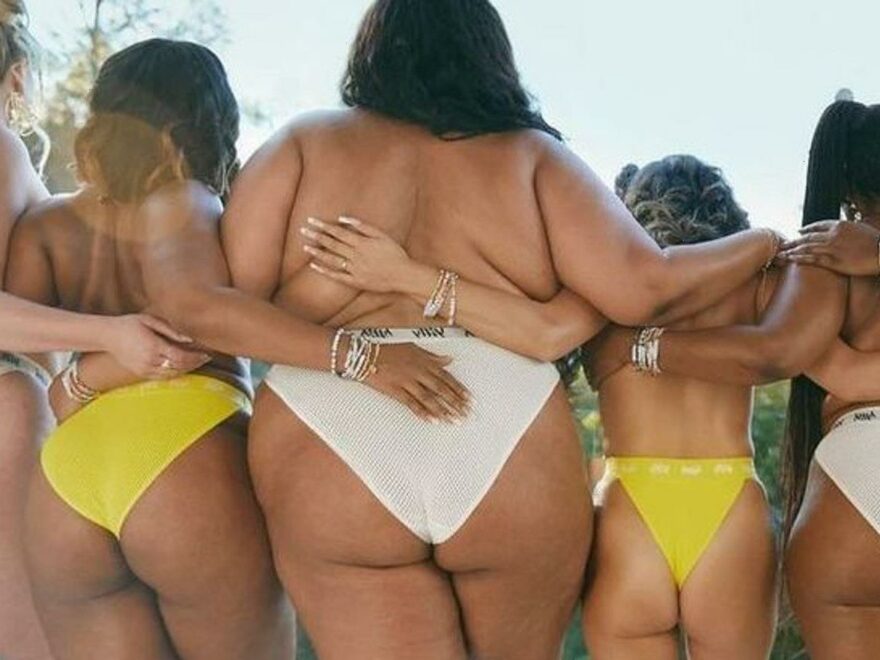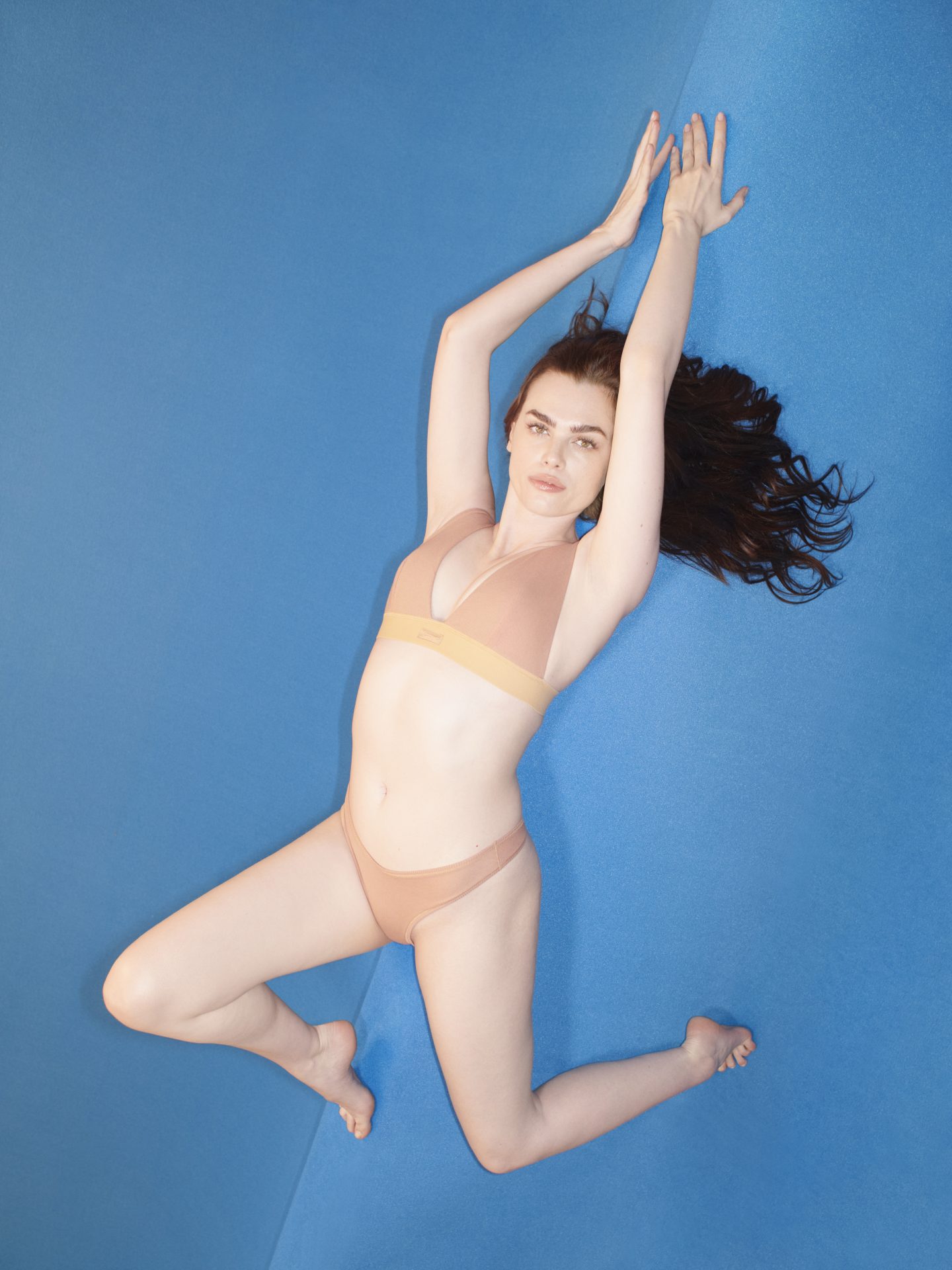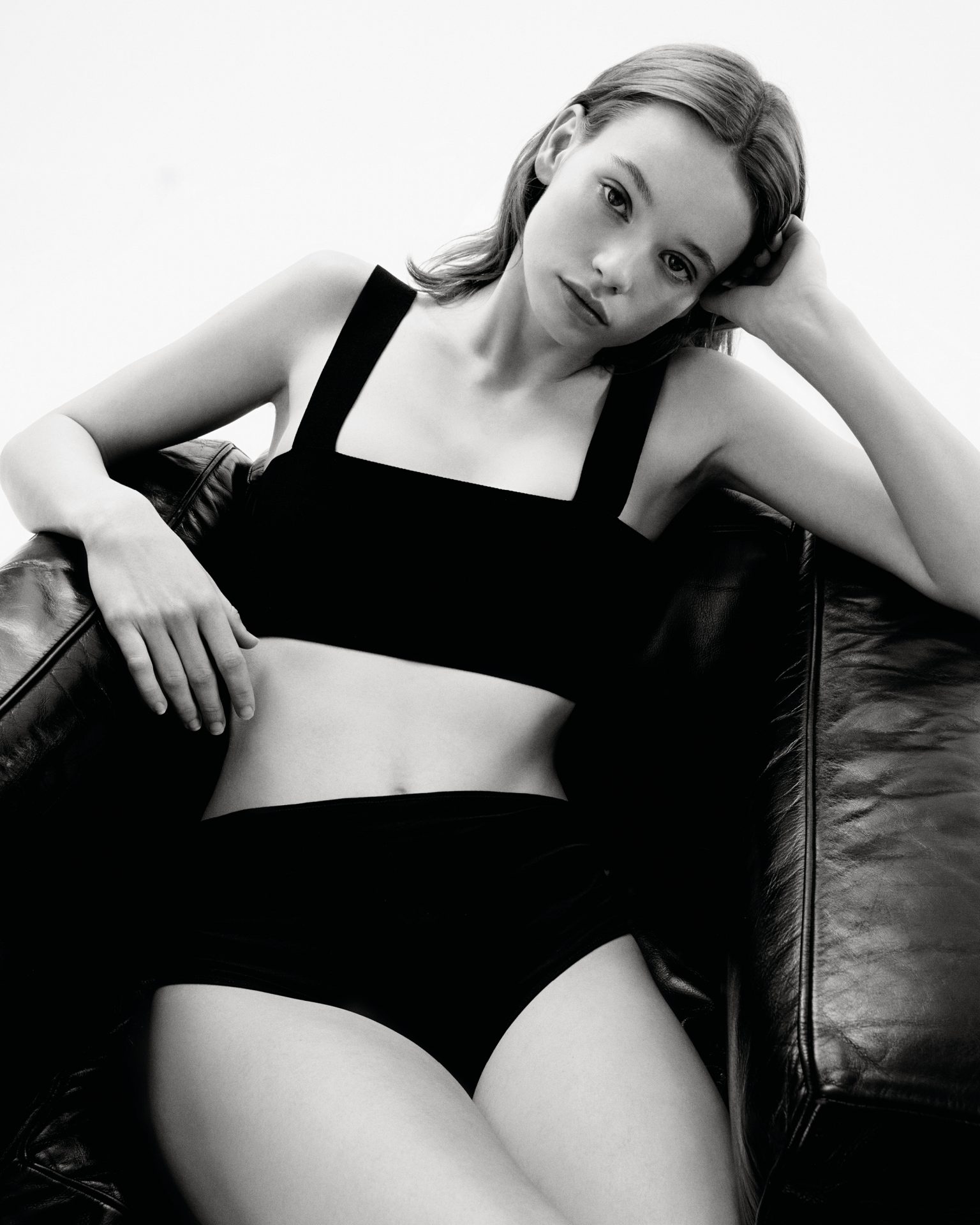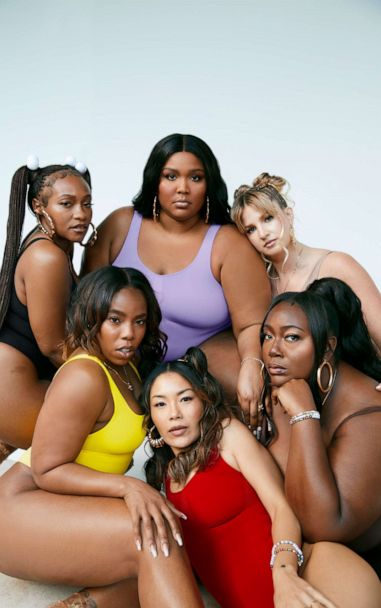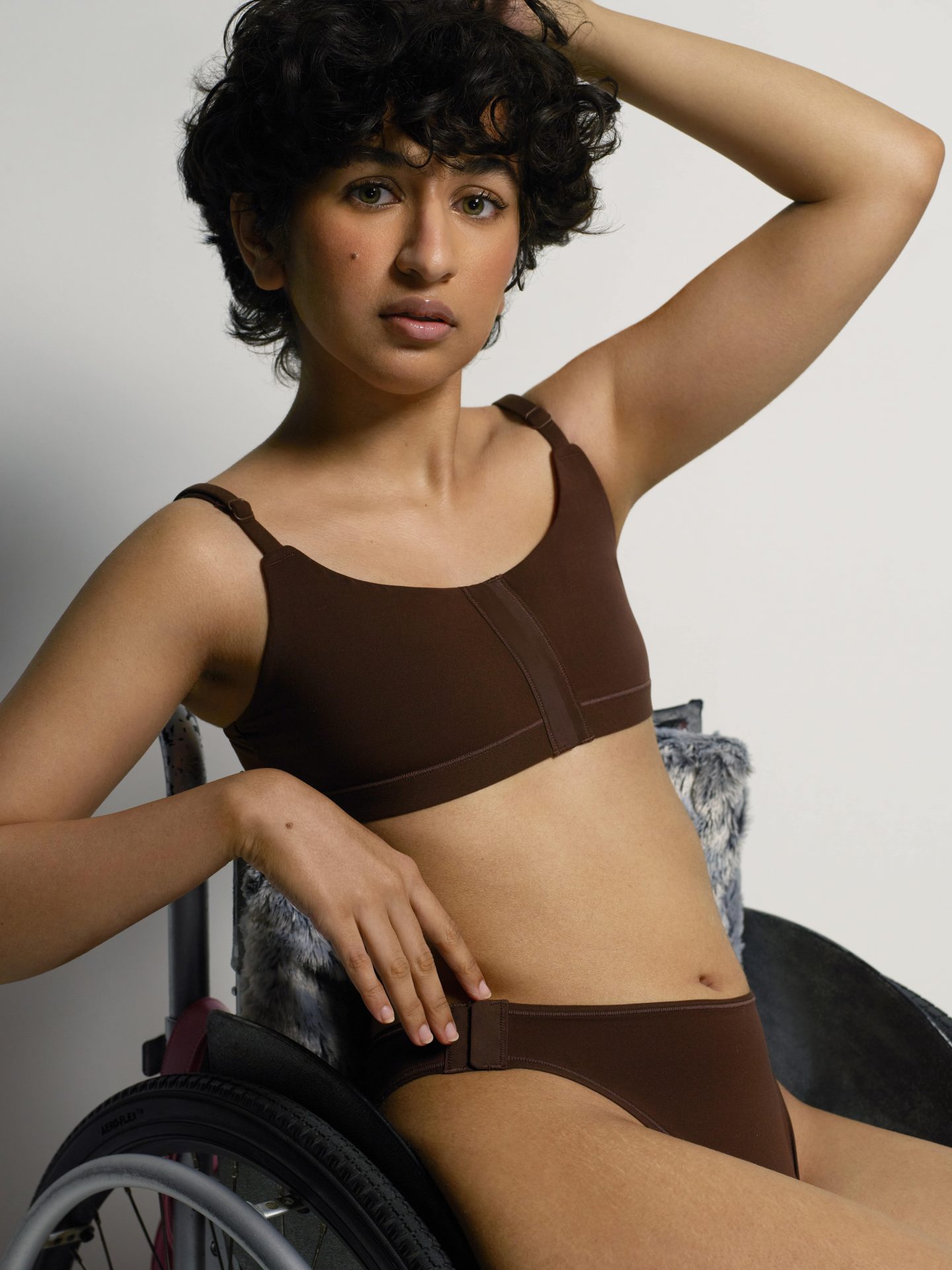Written by Naomi May
Digital fashion writer Naomi May sizes up the shapewear industry and its uncomfortable relationship with body positivity. Can both truly exist in the same realm?
A video re-emerged on TikTok recently that showed Kim Kardashian explaining to her daughter North why she developed backless shapewear for her brand Skims. “I need to have smoothness and still feel snatched and sucked in a dress,” Kardashian explains, smoothing her hands over the sides of her body. “I wanted you guys to see how necessary it is [to wear shapewear]. Because if I was wearing this dress without shapewear, you’d see cellulite and I wouldn’t feel as confident.”
Kardashian, who typically wears a UK size 6, debuted her solutions-based shapewear line Skims in September 2019, and according to estimates, sold $2 million (£1.6m) of product within the first few minutes, numbers that are “unprecedented for shapewear and undergarment brands”. In its three-year existence, Skims has amassed a cross-platform social media following just shy of 10 million, including 1.3 billion views on TikTok. It’s stocked at Net-a-Porter, Selfridges and Harrods and has collaborated on a sell-out collaboration with Fendi. Needless to say, it has redefined the shapewear standards previously set by its predecessors.
Last week Victoria Beckham, who also wears a UK size 6, announced the expansion of her brand into shapewear with a capsule collection of body-contouring dresses, bralettes and leggings. VB Body’s pieces, Beckham confirmed in an interview, “really do cinch you in at all the right places and give you a nice round bottom or a defined waist”. VB Body’s campaign comprises seven images of a white and conventionally thin woman.
Thanks to endorsements from some of the world’s most famous bodies, shapewear has never been cooler. But what exactly do endorsements of shapewear from some of the world’s most honed and toned bodies say about our collective body image? Why would bodies that are objectively small and slim need to create, sell and indeed wear shapewear?
“With big social events now back in our calendars, it’s perhaps no surprise we are seeing consumer interest in shapewear trending upwards,” Michael Robinson, retail trends analyst, says, pointing to the 270% spike in Google searches for “tummy control shapewear” since this time last year.
Skims’ sizes span the gamut from XXS to 5XL, while the VB Body range will run from a UK size 4 to 18. Despite living in the age of body positivity, isn’t it the unrealistic expectations that fashion continues to perpetuate that’s fuelled the current demand for shapewear? It’s hardly coincidental that, according to Google, searches in the last three months for “how to lose weight” have spiked by 250%, while searches for “body shaping undergarments” have simultaneously risen by 5,000%, according to WGSN.
Fashion psychologist Carolyn Mair notes a correlation between the rise of shapewear with the rise of body consciousness. “The fact that body consciousness is so important in our society speaks volumes about how we see ourselves,” Mair tells Stylist. “What constitutes a beautiful body changes according to the zeitgeist, and today, we are bombarded with images of bodies more than ever before. Exposure to these images influences how we see ourselves as we compare ourselves to others and how we would like to look.”
Rather than empowering, as many shapewear specialists have claimed to do, surely then the spike in popularity of shapewear signals a move away from power and in the opposite direction.
Fashion consultant Laura Merritt has yet to find a shapewear line she feels supports her body rather than restricts it. “I hate it; I am yet to find any shapewear that is actually good,” she tells Stylist. “I usually only wear it at functions like weddings if I want a smoother look, but that is about it, as it’s so restrictive and inevitably does make me feel bad about myself.”
That’s not to say there aren’t those changing the shapewear game and hoping to eradicate the connotations between shapewear and weight loss while doing so. Last month, Lizzo, who’s long been heralded as a pioneer of the body positivity movement, debuted Yitty, a new line of shapewear in collaboration with activewear brand Fabletics. The line runs the gamut of sizes – it offers shapewear in sizes 6X to XS – and, in a sign that things in the shapewear sphere are changing, the launch of Yitty has had a forceful impact on the ascent of size-inclusive shapewear. Data platform LoveTheSales noted a 72% increase in plus-size shapewear in the 24 hours following Yitty’s launch, a sign that shapewear may become genuinely more inclusive – both behind and in front of the camera.
“I’m sick of people telling me how I’m supposed to look and feel about my body,” Lizzo penned in a recent social media post. “I’m tired of discomfort being synonymous with sexy. Yitty isn’t just shapewear, it’s your chance to reclaim your body and redefine your beauty standard.” Perhaps the contours of the shapewear industry really are shifting once again.
Images: courtesy of brands
Source: Read Full Article
